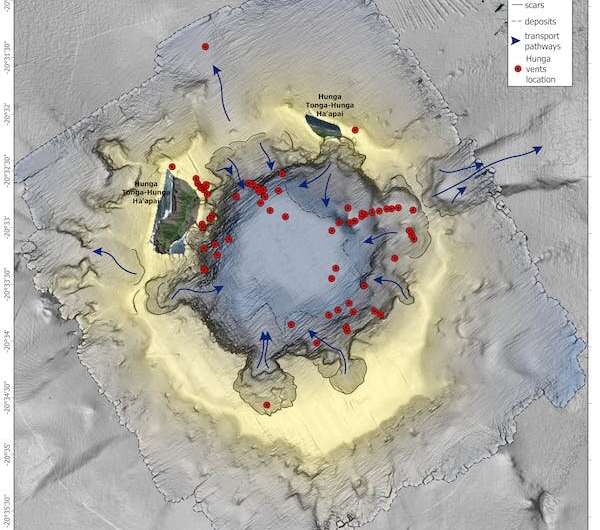Phys.org January 13, 2023
An international team of researchers (Tonga, New Zealand) studied the texture and chemistry of the erupted particles to find clues about the event’s violence. Isotopic “fingerprinting” showed at least three different magma sources were involved. Two magma bodies were older and resident in the middle of the Earth’s crust, the younger one joined shortly before the eruption. The mingling of magmas caused a strong reaction, driving water and other “volatile elements” out of solution and into gas. This created bubbles and an expanding magma foam, pushing the magma out vigorously at the onset of eruption. The caldera collapse led to a chain reaction because seawater suddenly drained resulting in high-pressure direct contact of water with magma at more than 1150℃ causing two high-intensity explosions around 30 and 45 minutes into the eruption. Each explosion further decompressed the magma below, continuing the chain reaction by amplifying bubble growth and magma rise. Even after long analysis of a growing body of eyewitness accounts, there are still major unanswered questions about this eruption. Despite the enormous expense of submarine research vessels, intensive efforts are underway to identify other volcanoes around the world that pose Hunga-like threats…read more.

This map shows the sites of ongoing venting after the eruption. Credit: Marta Ribo/AUT, CC BY-ND